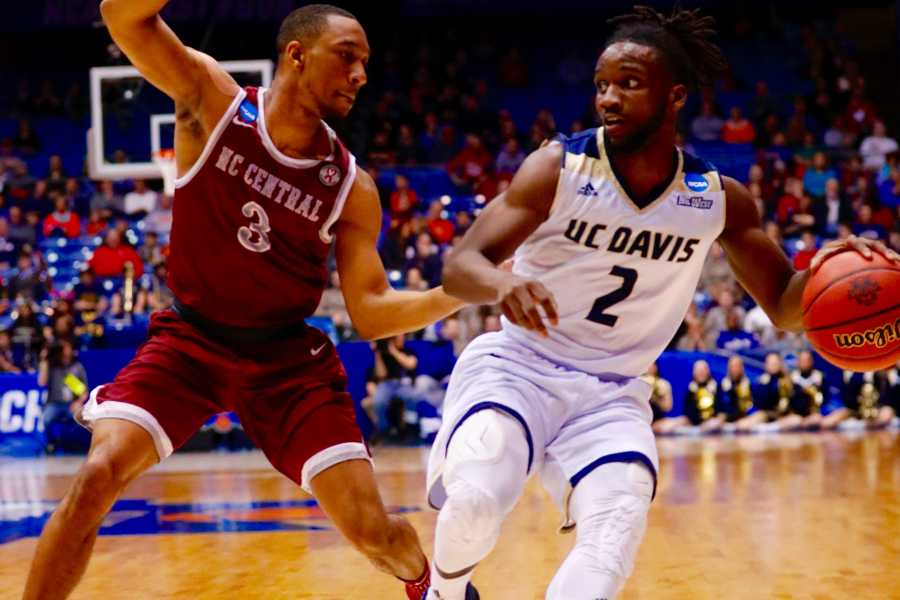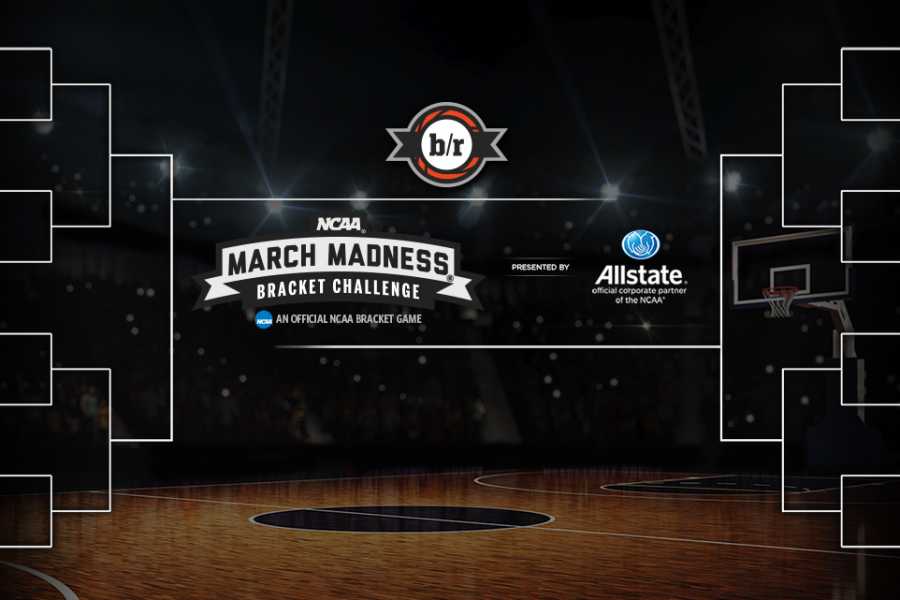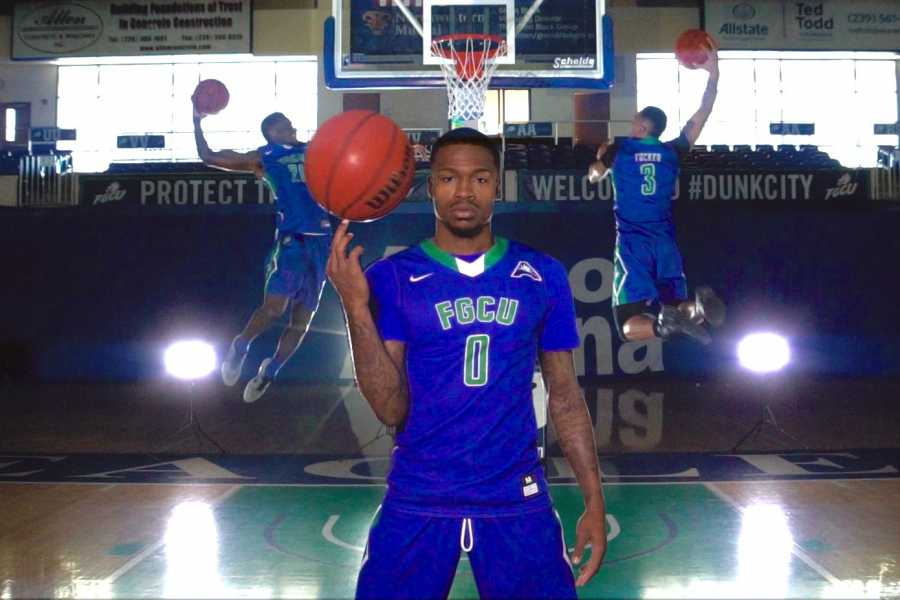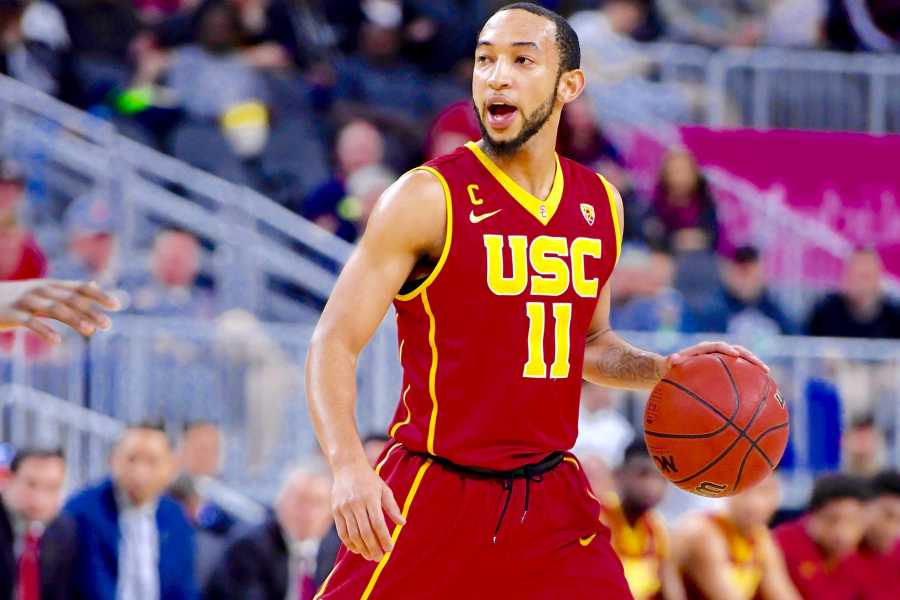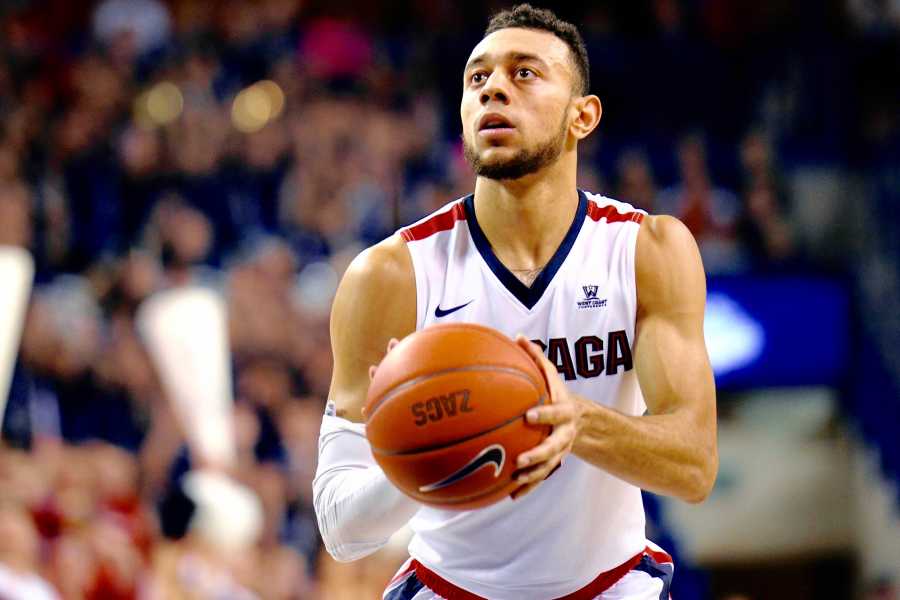Villanova's Kris Jenkins shoots the winning shot against North Carolina—and celebrates—in the 2016 NCAA championship game. (Getty Images)
Maybe the craziest thing about what Jenkins did is that Paige had spent all season rooting for the guy. They were friends. Jenkins is the adopted brother of Paige’s Carolina teammate, guard Nate Britt. Jenkins came down to Chapel Hill every summer to hang out, work out and play pickup with them. Jenkins had stayed in Paige’s house. They were buddies. Paige pulled for Jenkins all year and then…there he was, shooting that shot.
And then he came back down to Chapel Hill. Yes, after killing them like that in the national title game. So he and Paige hooped again. They hung out.
But no—they didn’t talk about it.
✦ ✦ ✦
Now, out here in Salt Lake City and in the small gyms around the D-League, Paige has been fighting a familiar feeling from his senior year at Carolina.
He didn’t shoot great most of the year, just wasn’t himself. He was trying to prove that he was still that same sophomore NBA scouts thought so highly of.
But then came that which he has since taken from The Shots: not some sort of wistful regret that things did not go differently, but rather, the gift of knowing what it first took to get there at all.
Come the ACC tournament that stressful senior year, he told himself to quit worrying and just enjoy the ride, because “any of those games could be my last.”
After that, he says: “I started playing a lot better. Stopped pressing so much. And it was just so much fun. That was the most fun I’ve ever had, just going through the ACC tournament and then into the NCAA tournament. And I was playing well. I wasn’t worried about anything.”
And so then he found himself hanging in the air with the national championship in the balance and the eyes of millions upon him. He decided to shoot after second-guessing himself, and then he felt the magic.
“I got to be in that moment, at the pinnacle of college basketball,” he says. “And succeed in that moment. Everybody in the college basketball world wants to be there. It was fun, man.”

Paige during a game against the San Antonio Spurs during the 2016 Utah Summer League on July 4, 2016, in Salt Lake City. (Getty Images)
But then, after the championship game, the Brooklyn Nets drafted him, then traded him to the Utah Jazz, then the Jazz bumped him down to the D-League because their roster was full, and now…well, now, here he is. He’s gone from taking charter planes to flying coach, from hooping against Arcidiacono in front of 74,000 people in Houston’s NRG Stadium—not to mention 3.4 million live video streams and 22.3 million viewers on television—to 300 semi-bored fans in a community college gym.
And he started stressing again. “I’ve never been in this situation,” he says. “I was pressing to have good numbers and impress people.”
This particular night against Arcidiacono, he plays OK. Paige starts the game with an early jumper that looks smooth, easy and free. Then he gets into foul trouble and sits a bit and struggles with his rhythm the rest of the game, shooting 5-of-13 for 13 points.
Even still, out here against Arcidiacono again, they are two old March Madness rivals, yeah, but it’s clear one is superior. Throughout, Paige looks bigger, quicker, more confident. He asserts himself while Arcidiacono often disappears. (Arcidiacono finishes with five points, hitting one three-pointer and two free throws.) Beyond Arcidiacono, among everyone on the court, in this little gym in front of this little crowd, Paige looks like he belongs somewhere bigger.
His Stars lose due to some truly awful officiating—the crowds aren’t the only things lacking in the D-League. One more thing to think about. But he’s feeling more like the Marcus Paige he wants to be.
“Making the most of it,” he says. “Just focusing on what I need to do in the moment, and getting better, and playing the right way.”
He’s been working on his defense. He’s studying Patty Mills, a fellow 6-foot-ish guard, to learn the best ways to make a living as such in the NBA. He’s trying to play as well in first halves as he does in seconds. He’s making sure to take notice when, even before these tiny crowds in these tiny gyms, there are kids wearing UNC jerseys with the number five. That happens often. And he’s feeling more like he did during his run up to that shot. Pressing less. Having more fun. Worrying less every week.
The other night, he even hit a game-winning three.
Correction: The story has been updated to note Sean Woods had several coaching (but not head coaching) jobs before Morehead State.
Brandon Sneed is a writer-at-large for B/R Mag, and the author of Head In The Game: The Mental Engineering of the World's Elite Athletes (out now from Dey Street). His writing has also appeared in Outside, ESPN The Magazine, SB Nation Longform, and more, and has received mention in The Best American Sports Writing. His website is brandonsneed.com. Follow him on Twitter: @brandonsneed.
Click here to get B/R Mag on the go in the B/R app for more sports storytelling worth your time, wherever you are.



